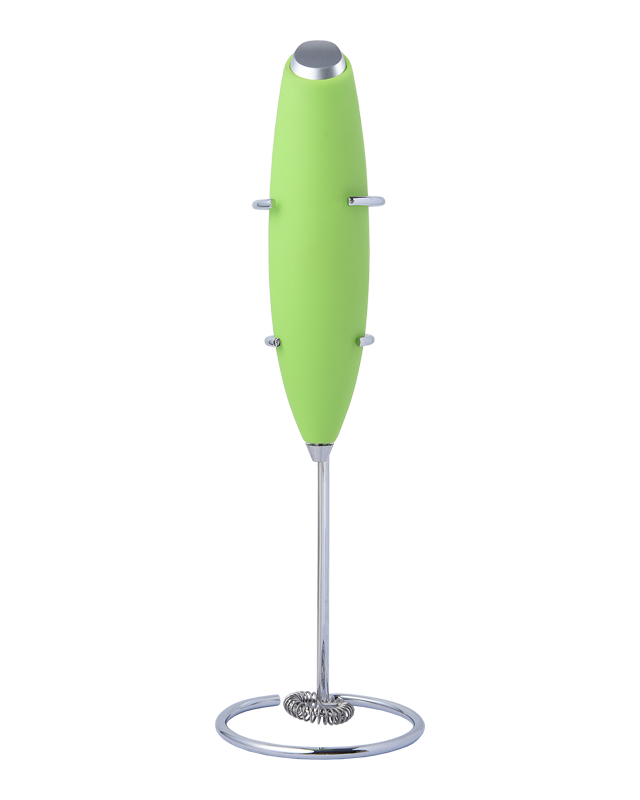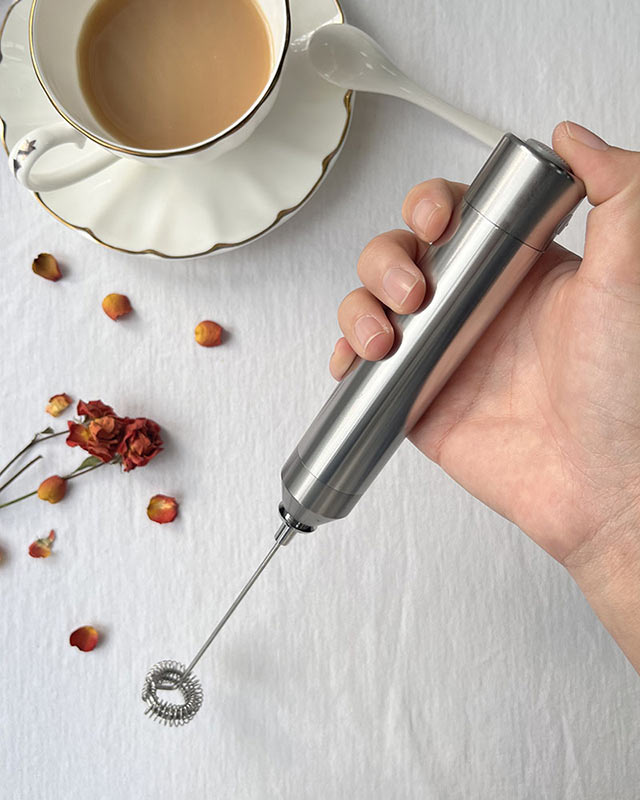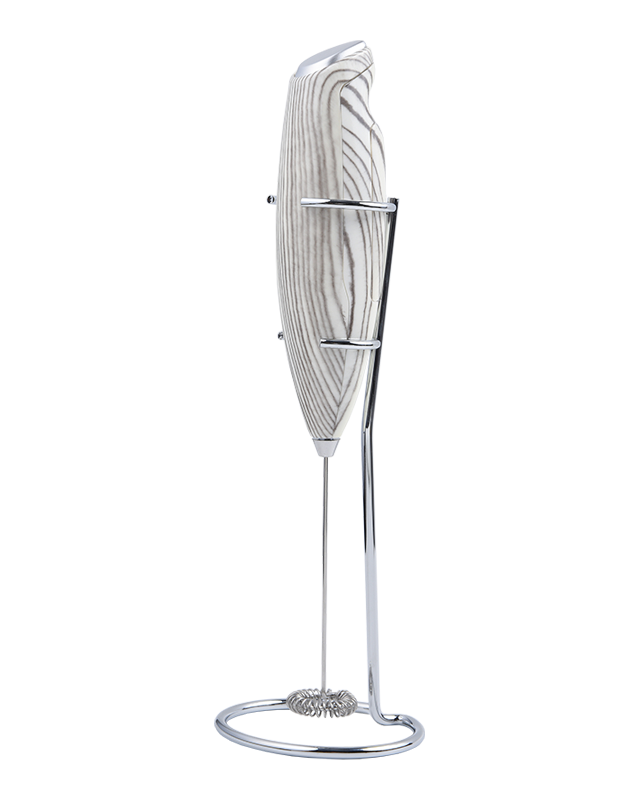The housing structure of the Milk Former Stick plays a fundamental role in isolating internal electrical components from external moisture, which is constantly present in steaming environments such as kitchens and cafes. Leading manufacturers implement water-resistant sealing techniques, such as ultrasonic welding, rubber grommets, or silicone O-rings, around the battery compartment and motor casing. These sealed compartments prevent splashes of milk or water from entering the motor unit, which otherwise could cause short circuits, internal corrosion, or sudden device failure. By effectively preventing the ingress of water vapor or droplets—even during cleaning or use adjacent to steam-releasing appliances like espresso machines—the Milk Former Stick ensures a high level of operational integrity and reduces the risk of electrical malfunctions. This enhances its suitability for repeated, daily use in humid food preparation zones where safety and reliability are mission-critical.
The external components of the Milk Former Stick, especially the handle and control interface, are made from thermally stable, food-grade plastics such as ABS (Acrylonitrile Butadiene Styrene) or TPE (Thermoplastic Elastomer). These materials are specifically chosen for their high electrical insulation properties, meaning even in the unlikely event of internal wire exposure or component breach, the external casing remains non-conductive. The materials are engineered to withstand high temperatures without softening or deforming, ensuring that the user does not experience burns or discomfort even if the stick is operated near boiling liquids. These plastics are also chemical-resistant, which makes the product compatible with a wide variety of food ingredients and cleaning agents. Additionally, the milk-contacting whisk is constructed from food-grade stainless steel, which is corrosion-resistant and non-reactive with dairy proteins, maintaining safety standards without affecting taste or hygiene.
Most Milk Former Sticks operate on low-voltage direct current (DC), typically powered by two AA batteries or rechargeable lithium-ion cells. This low-voltage system significantly reduces the risk of electric shock, even if the device is used in wet conditions or comes in contact with splashing milk or water. The internal current is not strong enough to cause harm under typical conditions, which makes it inherently safer than devices connected directly to high-voltage mains electricity. Models with USB charging are equipped with safety modules such as overcharge protection and thermal cut-off, which protect users during recharging, especially when performed in steamy kitchens or near sinks. The low-voltage operation also allows the device to be lightweight and portable without sacrificing safety, making it an ideal solution for both domestic and commercial use.
The operational interface of the Milk Former Stick typically features a momentary switch, meaning the device only runs when the user actively holds the power button. This design minimizes the risk of unintended activation, especially during cleaning or when inserting the whisk into the milk. Some advanced models integrate pressure sensors or tactile feedback systems that require deliberate user interaction to start the frothing process. These safety controls not only reduce energy waste but also lower the chance of hot milk being accidentally whipped and splashed onto users' faces or hands. The button's strategic placement further ensures that the user maintains full control of the device throughout its operation, even in cases of slippery or wet hands.
User safety is further reinforced by ergonomic considerations, particularly in the handle design of the Milk Former Stick. High-friction materials, such as silicone overlays or rubberized textures, are applied to the grip area to prevent slippage during use. This is especially relevant in environments where users are dealing with condensate, spilled liquids, or steam that can compromise their hand’s grip. The ergonomic curvature of the handle also promotes a natural wrist posture, reducing fatigue during repetitive tasks and providing a more stable grip, even with minimal hand pressure. This anti-slip, user-centric design minimizes the chance of accidental drops or splashes, which can otherwise lead to injuries or product damage in high-temperature kitchen environments.



 English
English
 Français
Français
 Español
Español
 Deutsch
Deutsch
 日本語
日本語





























